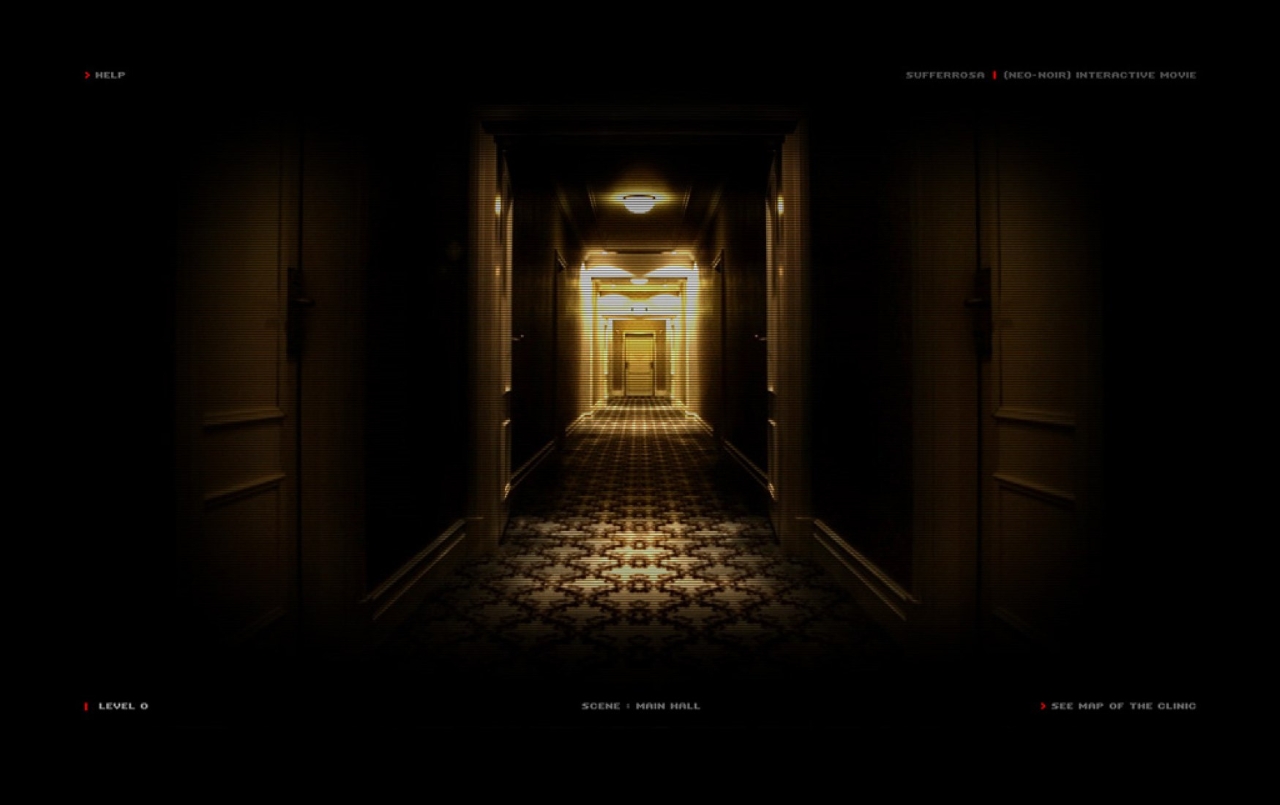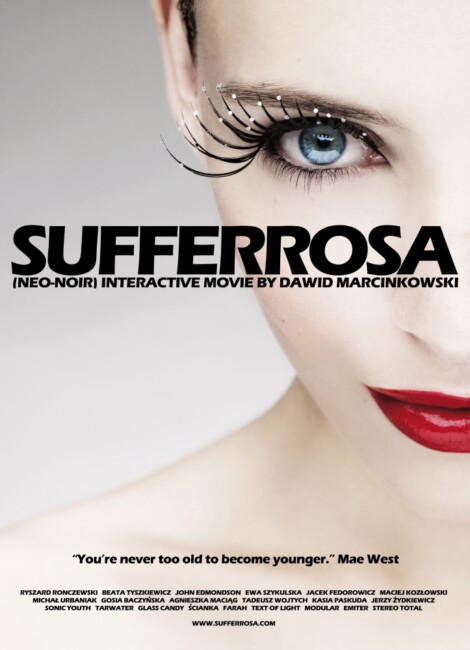Crew
Director/Screenplay/Producer/Production Design – Dawid Marcinkowski, Photography – Kasia Kifert, Music – Filip Marcinkowski, Makeup Effects – Malgorzata Kotlonek. Production Company – Dawid Marcinkowski.
Cast
Ryszard Ronczewski (Professor Carlos Von Braun), Beata Tyszklewicz (Norma Desmond), John Edmonson (Ivan Johnson), Ewa Szykulska (Sunday Love), Maclej Kozlowski (Rene Levert)
Plot
The private detective Ivan Johnson is given the assignment of finding the missing Rosa Von Braun. The search leads him to the mysterious scientist Carlos Von Braun. Johnson wakes up inside Von Braun’s medical clinic on Miranda Island. There he must navigate the multiple levels of the labyrinth in search of Rosa. During the course of his investigation, he discovers that Professor Von Braun has created a rejuvenation treatment that can make aging women look twenty years old again. Men are able to take the treatment but have to become women to do so. Von Braun has also found a means of turning the rejuvenated women into an army of seductresses.
Though it has screened at various film festivals (in this case, the Vancouver International Film Festival), Sufferrosa – not to be confused with the Pixies’ album Surfer Rosa (1988) – is a film only by virtue of the fact that it is screening in a theatre and being shown via a projector. In every other regard, Sufferrosa defies the presentational and narrative forms that we consider to make up a film. In actuality, Sufferrosa should be considered more as an internet-based installation project. Creator Dawid Marcinkowski has intended Sufferrosa as an interactive film to be navigated via one’s computer where the person viewing is the one who chooses the direction the story takes. This is being labelled as a revolutionary new form of cinema. That said, the basic idea of the interactive film has been done before – Return to House on Haunted Hill (2007) used its dvd control menu to allow the viewer to make several different scene choices in a limited manner.
At least, that is the pitch. At the film festival screening I attended, Dawid Marcinkowski was present and personally guided us through the story as it played out on the big screen in a 75-minute presentation. What we saw was statedly Dawid Marcinkowski’s favourite version of the story – what he termed his ‘director’s cut’ – while also saying that there were numerous other possible ways to navigate the narrative, including three different endings that could be arrived at. Certainly, what you expect of Sufferrosa before going in to watch it is very different from what you get on the screen. You expect something like a videogame where a player character can be directed to perform a variety of actions and make choices that leads them to a different place. I also expected there would be a form of audience interactivity where the people in attendance would be able to vote or control what happened by some means.
However, none of this is the case. Audience interaction and the fluidity of the plot is limited solely to Dawid Marcinkowski directing from a keyboard at the speaker’s podium – we are still constrained to being the passive audience we are when we watch a more traditional linear narrative film. Equally, there is no sense that the narrative and story outcomes are flexible depending on choices that the player makes. Indeed, there seems no particular story to Sufferrosa – rather the sense is more akin to hitting a series of random hyperlinks on a website. Doing so does not take one to another part of the story so much as it produces a series of information pop-ups – giving us bios of the characters and potted pieces of information about the facility and what is happening there.

In fact, there is very little film footage in Sufferrosa at all, just looped shots and scenes overlaid with a frenetic barrage of MTV-styled infographics, repeated slogans and busy visual texture. None of these pop-ups or clips gives you the feeling of moving a scene anywhere – as in the sense of a character opens a door, enters a room, converses with someone etc. Moreover, with the action quickly jumping to other locations, this results in abrupt changes of tone, especially when it comes to pieces of music that cut in mid-piece to something in a jarringly different style.
Dawid Marcinkowski sets up an interestingly premise about rejuvenation formulas, the dark side of beauty treatments, sinister medical institutes run by scientists with Nazi backgrounds, revolutionary armies, mind controlled rejuvenated beauties and so on. Marcinkowski appropriates film noir convention, including referring to Sufferrosa as ‘neo-noir’ – a detective hero, a search for a femme fatale, a character named Norma Desmond (a Sunset Blvd. (1950) reference) as one of the patients. There are even numerous references to the film noir pastiche Alphaville (1965) – a scientist named Professor von Braun, the detective hero trying to rescue his daughter and a departure through ‘intersidereal space’ at the end. However, none of this seems to go anywhere.
For all the borrowings from film noir, Sufferrosa fails to offer any sense of a mystery being uncovered, of clues being brought together and a puzzle solved that all detective stories work on – just endlessly flickering MTV-styled imagery and random infodumps. For what you feel it could have been, that makes Sufferrosa a decided disappointment.


